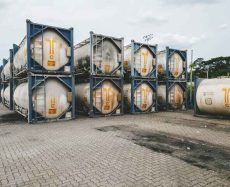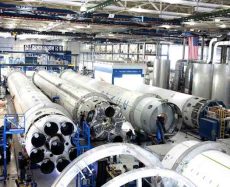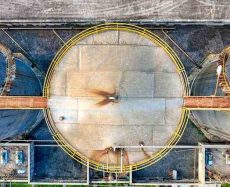
- admin
- October 18, 2021
5 Reasons Soil Analysis Is So Important Following Oil Tank Removal
Many homeowners and business owners are unaware that they are living or working on top of an underground tank that has cracked, corroded, and polluted the ground underneath them. This is concerning since oil may affect soil quality, your family’s and neighbors’ health, and your property’s selling value.
If you no longer need an oil tank, you must have it removed by a professional who can dig it out (if it’s underground), remove any existing oils, and expertly examine the surrounding soil for leaks and contamination.
If you believe you have industrial oil tanks on your property, it’s important for the experts to assess the situation. A complete soil analysis is to be performed. In this blog, learn why a soil analysis is so important for your property once a tank is removed.
1. Environmental protection
If you’ve discovered an old aboveground or underground industrial oil tank on your home or commercial property, it’s critical to remove it and do a soil analysis to ensure the dirt beneath you isn’t poisoned any further and the environment is protected.
All is well if your tank is successfully removed and your soil analysis is negative. If the soil study reveals that it contains more parts per million (ppm) than the Ministry of Environment’s norms allow, the soil must be removed and sent to a registered receiver for remediation.
2. Save time and money by conserving energy
Don’t put off the pricey cleanup! If you require oil tank removal and soil testing, you must act soon before the matter becomes more complicated. The oil tank removal process might get more costly and demanding as the removal and testing condition becomes more severe.
3. Crop improvement
After an oil tank is removed, soil testing is also necessary for individuals wishing to maximize plant culture on their farm or in their garden. Plants may not grow, die, cause harm to individuals who eat them, or grow abnormally if the soil surrounding your tank is contaminated.
Whether you have industrial oil tanks or not, testing your soil for crop growth is always a smart idea.
4. Safeguarding yourself and your neighbors
When it rains, polluted soil might wash into your house, your yard, your garden, and your neighbors’ houses. Contaminated soil can cause problems by:
- Direct contact
- Inhalation
- Ingestion (food, water)
5. Re-selling your house
Because specific government rules demand secure soil samples following tank removal, having polluted soil from industrial oil tanks will prevent you from selling your home or land.
Understanding the soil remediation process
If your soil analysis shows that your soil is truly contaminated, remediation is required to return the land to its original, healthy state.
- A perimeter study of an oil tank is conducted after it is expertly removed.
- Workers dig the pollutant out fully once the degree of contamination has been determined.
- The contaminant is placed in a leak-proof bin that is lined.
- Additional samples of the sides and bottom of the hole are taken once it has been excavated.
The hole can be filled and recorded as having met all requirements if the site meets environmental regulation criteria. If the property fails testing, however, an additional soil analysis may be required to comply with mandatory regulations.
Category
- Above Ground Fuel Tanks
- Above Ground Gas Storage Tank
- Above Ground Storage Tanks
- Above Ground Water Storage Tanks
- Agricultural Tanks
- Chemical storage Tanks
- Diesel Fuel Storage Tanks
- Diesel Storage Tanks
- Exernal FloatingRoof Tanks
- Farm Water Tank
- Fiberglass Oil Tanks
- Fiberglass Septic Tanks
- Fiberglass Underground Fuel Storage Tanks
- Field Erected Tanks
- Floating Roof Tank
- Fuel tank
- Industrial Chemical Storage Tanks
- Industrial Gas Tanks
- Industrial Plastic Tanks
- Industrial Storage Tanks
- Industrial Tank heating pads
- industrial tanks
- Natural gas
- Natural gas vs Propane
- oil storage tank
- Oil Storage Tanks
- Peracitic Acid
- Petroleum Tanks
- Residential gasoline storage tanks
- Residential Water Storage Tanks
- Sodium Hydroxide Storage Requirements
- Sodium Hypochlorite Storage Tanks
- storage tank failure prevention
- Storage Tanks
- Sulfuric Acid Tanks
- Uncategorized
- UnderGround Storage Tanks
- Water Storage Tanks

 Tank Size Calculator
Tank Size Calculator






